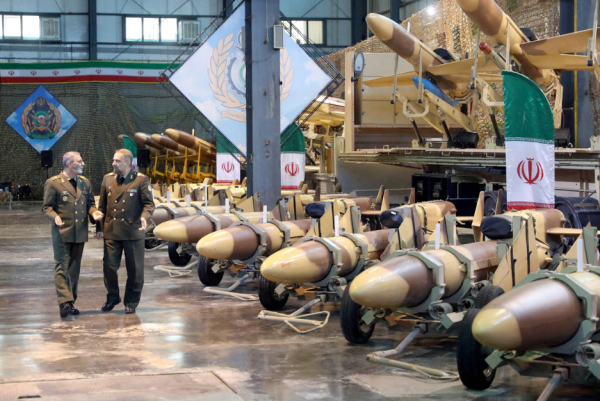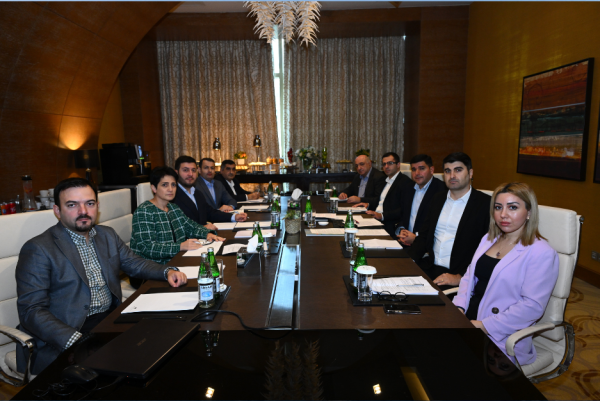Growing South Caucasus-Central Asia Link within Broader China-Europe Connectivity Projects

As the center of gravity of the world economy has been shifting from the West to the Asia-Pacific region in the last decade, the countries located between China and the EU had to adapt their politico-economic strategies to the realities of the newly-emerging world order. Being mostly landlocked, countries in the South Caucasus and Central Asia saw the emergence of different connectivity projects possibly running through their territories as an opportunity to overcome the challenges emanating from long distances to major markets and dependence on neighboring major powers. China’s increasing involvement in Central Asian economies through its ambitious Belt and Road Initiative (BRI) and the EU’s plans to extend the Trans-European Transport Network (TEN-T) to Azerbaijan and Georgia is expected to bolster these countries’ position as key transportation hubs in the so-called New Silk Road. Dubbed as the Trans-Caspian International Transport Route (TITR) or the Middle Corridor, this route will open up certain avenues for both regional and external players to benefit from access to world markets.
The Middle Corridor is a multimodal (land and sea) transport route adjoining the economies between the EU and China and has gained geopolitical significance since the early 2010s. It includes more than 4,250-km railroad transport and about 500-km sea transit mainly across the Caspian Sea. The long journey of freight trains starts from the Khorgos Gateway (one of the most ambitious projects in BRI) in the Chinese-Kazakh border where the Chinese freight is reloaded onto Kazakh trains before passing through Kazakhstan and the Caspian Sea to reach Azerbaijan and Georgia. From there, rail companies or freight forwarders may use the Baku-Tbilisi-Kars railway (“Iron Silk Road'') to reach Turkey and further to the European markets either through the Marmaray Tunnel under the Bosphorus Strait or across the Black Sea to Ukraine. The Baku-Tbilisi-Kars railway, one of the most essential parts of the route, was launched in 2017 and the volume of freight transportation keeps growing as it has recently started to operate in both directions. It should come as no surprise that the number of Chinese containers using the TITR on the way to Europe increased 111 percent in 2019 compared to the previous year. On December 4th, 2020, the first freight train carrying goods from Turkey to China set off from Istanbul to China following the Middle Corridor to reach its destination in China’s Xian city.
Although the share of international shipment of cargo by rail-ferry transport is too small compared to maritime shipping (over 90 percent) and air freight, in recent years it has become more competitive thanks to decreased cost of transportation and shortened delivery time. The TITR aims to increase the annual number of containers transported via the route to 75.000 - 100.000. According to some estimates, the trade share of the railway cargo services between Europe and China will double over the next decade. Among the different transportation routes in the East-West trade exchanges, the Middle Corridor appears to be the most flexible one as the cargo traffic can easily be rerouted to alternative rail systems or ports on the way to Europe or vice versa. While in the Caspian Sea one can find alternatives to Kazakhstani ports (Aktau) in neighboring Turkmenistan (Turkmenbashi), in Black Sea Turkish, Romanian, Georgian, Ukrainian, and Russian ports offer services for uninterrupted trade in the region. Moreover, the TITR lessens the trading sides’ overreliance on the transport corridors passing through Russia in the north and Iran in the south. The Northern Corridor, connecting China to European markets through Kazakhstan and Russia, currently accounts for more than 90 percent of transcontinental rail traffic but the realization of new infrastructure projects in the Middle Corridor may decrease this share in the long term. The Trans-Siberian Railway operates close to full capacity and without modernization, it will prove increasingly difficult to maintain existing delivery speed and freight turnover. The Southern route via Iran is also plagued by infrastructure problems on both the Turkish and Iranian sides of the border. As the regional countries develop more sophisticated seaports and build a viable railway system, the Middle Corridor’s appeal to the Chinese and European markets will continue to grow.
The Zangezur Corridor
Recent geopolitical developments in the wider Caspian region indicate that the Middle Corridor may gain a new momentum after the opening of new transport arteries as a part of this route. Azerbaijan and Turkey are highly investing in the idea called Zangezur Corridor that will offer alternative passage (to BTK) from Turkey to the Caspian Sea via the planned Kars-Nakhichevan-Meghri-Baku (KNMB) railway. By signing the 10 November 2020 ceasefire agreement, the Armenian, Azerbaijani, and Russian leaders not only ended the 44-day war in the Karabakh region of Azerbaijan, but they also agreed to unblock all transportation links between the countries. According to Clause 9 of the agreement, Armenia will have to guarantee the safety of transportation between Azerbaijan’s western districts and the Nakhichevan Autonomous Republic through its Meghri region to provide an unhindered movement of citizens, vehicles, and goods in both directions. Furthermore, Russia’s Border Guard Service of the Federal Security Service (FSB) will exercise control over the transport. Allegedly, the KNBM rail corridor might turn out to be 340 km shorter than the BTK and a possible mix of road and rail systems would make it more attractive for the cargo companies. Zangezur Corridor might also have a significant contribution to regional peace as it will increase economic interdependence in the region, a structure that will benefit Azerbaijan and Turkey but also Armenia, Iran, and Russia. For example, Armenia, a member of the Russia-led Eurasian Economic Union, will have a trade connection to the Russian market across Azerbaijan while Russia will find it attractive to bypass Georgia to have a link to Armenia. Similarly, the reopening of the Armenia-Iran railway through Nakhichevan will have a remarkable effect on bilateral trade between the two countries. Taken together, Azerbaijan-Turkey, Turkey-Central Asia-China, Russia-Turkey, Russia-Armenia, and Iran-Armenia trade relations will benefit from reopening of the Zangezur Corridor.
Turkey`s and Azerbaijan’s active involvement in the realization of the project might breathe a new life into the Middle Corridor as it will serve as a springboard for them in terms of easier contact with the Central Asian republics and China. It could clearly be seen in Turkey’s active efforts to upgrade the level of economic and military cooperation with the regional countries in 2021. Turkish Foreign Minister Mevlüt Çavuşoğlu’s visit to Kyrgyzstan, Turkmenistan, and Uzbekistan in March was a significant development in this regard. Although the COVID-19 pandemic has made it difficult for Turkish truck drivers to pass through the Caspian Sea to Turkmenistan and from there to different parts of Central Asia, the parties recently agreed on the elimination of related barriers.
Turkmenistani ports (Turkmenbashi) are an essential part of the Azerbaijan-Turkmenistan-Afghanistan multimodal transport route called Lapis Lazuli Corridor that runs from Afghanistan to Turkmenistan followed by sea transit across the Caspian Sea to Azerbaijan and Georgia with the later shipments to Turkey and Europe. For the countries involved in the project, Lapis Lazuli route offers strategic opportunities to integrate local infrastructure into the wider Middle Corridor linking the major power centers in Europe and Asia. Being already part of the TITR, Kazakhstan steps up its efforts to expand the Aktau port in the Caspian Sea to meet the demands for increasing cargo transfer. On his official visit to Turkey in March, Kazakhstan’s Deputy Prime Minister and Foreign Minister Mukhtar Tileuberdi further reiterated Astana’s deep interest in being the key transport hub in the evolving East-West trade relations. Kazakhstan may also be considering buying Turkish TB-2 Bayraktar drones after the latter’s impressive success against the Armenian targets during the Karabakh War. Turkey’s Deputy National Defense Minister Muhsin Dere, on his two-days working visit to Nursultan in February confirmed that the two countries plan the joint production of military products in the optical and radio-electronics fields.
Uzbekistan is a pivotal country in the emerging transportation geography of Eurasia and both China and Turkey value Tashkent’s possible involvement in the Middle Corridor. Turkish and Uzbekistani foreign ministers signed a Memorandum of Understanding in March to improve economic relations in the near future. According to Çavuşoğlu, the two countries have the potential to upgrade mutual trade exchanges to a whole new level and the signing of a preferential trade agreement and later free trade agreement (FTA) is being planned. As Kazakhstan, Uzbekistan is also interested in Turkey’s military products. Ankara and Tashkent organized joint military exercises in the southern Uzbek city of Tirmiz in March with the participation of Turkish special forces. Uzbekistan has become a more active player in regional affairs since Shavkat Mirziyoyev came to power in 2016 and launched serious economic reforms to make better use of the country’s potential in the international arena. The Ministry of Transport was created in 2019 to implement the unified state policy in the development of new rail, road, and transport facilities in the country. Uzbekistan’s government has also accepted a state program for diversification of foreign trade routes for the transportation of goods for 2018-2022. In this context, Tashkent aims to have access to the Indian Ocean and South Asia via Trans-Afghan railroad (Uzbekistan-Afghanistan-Pakistan); to the Iranian ports via Uzbekistan-Turkmenistan-Iran-Oman railroad, and possibly to the Caspian Sea via China-Kyrgyzstan-Uzbekistan route that will later run through Turkmenistan towards the West.
China-Kyrgyzstan-Uzbekistan railway
The construction of the railroad has been on cards since the early 1990s as it would lead to the faster movement of goods and decrease the costs of transport between the countries. After President Mirziyoyev’s official visit to China in 2017, the corridor was officially launched and started functioning in early 2018. However, the Kyrgyz part of the railroad project is still missing and Uzbekistan and China intend to help Bishkek to overcome related problems as soon as possible. In June 2020, the first freight train carrying a load of about 230 tons of Chinese electrical appliances left the Lanzhou station in Gansu Province in China towards Kashgar in Xinjiang Uyghur Autonomous Region from where the cargo was loaded onto trucks to be transported to the Kyrgyzstani city of Osh. On the way to the last destination in Uzbekistan (Tashkent) the goods were reloaded from trucks to train again in the Uzbekistani part of the corridor.
What makes the China-Kyrgyzstan-Uzbekistan railroad project so important is the fact that after its full realization it might emerge as the shortest route between China and Europe, adding new momentum to the Middle Corridor’s strategic importance for all participating countries. According to some estimates, cargo transport through the corridor would be 295 km shorter than the existing one through the Khorgos Gateway in Kazakhstan. It might even divert 10-15 percent of interregional shipping currently carried out via the Kazakhstan-Russia route. Uzbekistan considers two main options for the direction of the next stops in West Asia towards Europe. First route might pass through Afghanistan to Iran and Turkey before entering European market. However, the volatile security situation in Afghanistan, especially after the expected withdrawal of the U.S. troops, makes the project less appealing at least in the short term. The second route that would run through Turkmenistan and across the Caspian Sea to Azerbaijan, Georgia, and Turkey would complement the Zangezur Corridor project to boost East-West trade in the future. Azerbaijan is considering further expansion of Baku International Sea Trade Port (Alat), biggest multipurpose port in the Caspian Sea, and Georgia upgrades Poti and Batumi ports in the Black Sea even if the more ambitious Anaklia port project faces difficulties to be completed in the coming years.
At the same time, while Kyrgyzstan has not been active to finalize the construction of the remaining part of the rail route on its territory (mostly for financial reasons), different studies show that rail routes from China to Uzbekistan through Kyrgyzstan would increase rail transport by 30 percent for Bishkek. Uzbekistan would also have significant gains from the realization of the project as it would decrease its dependence on Kazakhstan’s railways from Almaty to Khorgos to have access to the Chinese market. Allegedly, even with the multimodality (rail/road) of the existing route via Kyrgyzstan, it becomes 20 percent cheaper for Uzbekistan to connect with the Chinese railroads compared with the Kazakh option.
Challenges and way forward
Although the Zangezur Corridor and China-Kyrgyzstan-Uzbekistan railway projects offer significant benefits to the participating countries in the TITR in terms of cheaper and easier access to different markets, they still face certain political and financial problems to be realized soon. The plans for launching the Zangezur Corridor are still on paper and everything will depend on the future of negotiations between Armenia, Azerbaijan, and Russia. At the same time, the involved parties still have a long way to go to achieve more efficient logistic coordination through upgrading the custom clearance procedures and infrastructure. To this, one may add the lack of freight-dedicated connection between certain parts of the route, especially weaker industrial potential of the countries. China’s gradually increasing presence in the industrialization of the South Caucasian and Central Asian economies is a welcome step in this regard. Taken together, external financial support to the project will be one of the major determining factors for its future viability for intercontinental trade.
The China-Kyrgyzstan-Uzbekistan route also faces security challenges (e.g. recent clashes between Kyrgyzstan and Tajikistan) and financial problems related with the construction of rail lines in the Kyrgyzstani part of the project. China offered $6 billion to build the 450-500-km railroad in 2015 but Kyrgyzstan rejected the offer due to the “debt trap” concerns in domestic politics. Kyrgyzstan mostly relies on Russia in this regard but Russia might not be that interested to participate in a project that undermines the importance of its own transcontinental transport corridors. In this regard, Turkey might emerge as a facilitator of the project thanks to its evolving economic ties with Bishkek that revolves mainly around the Turkey-Kyrgyzstan High Level Strategic Cooperation Council, the Joint Economic Commission, and Business Forum. As the proposed extension of the railway from China to Europe through Kyrgyzstan and Uzbekistan will be in the interest of not only China and Turkey, more active involvement of the other parties might facilitate its realization in the nearest future.








